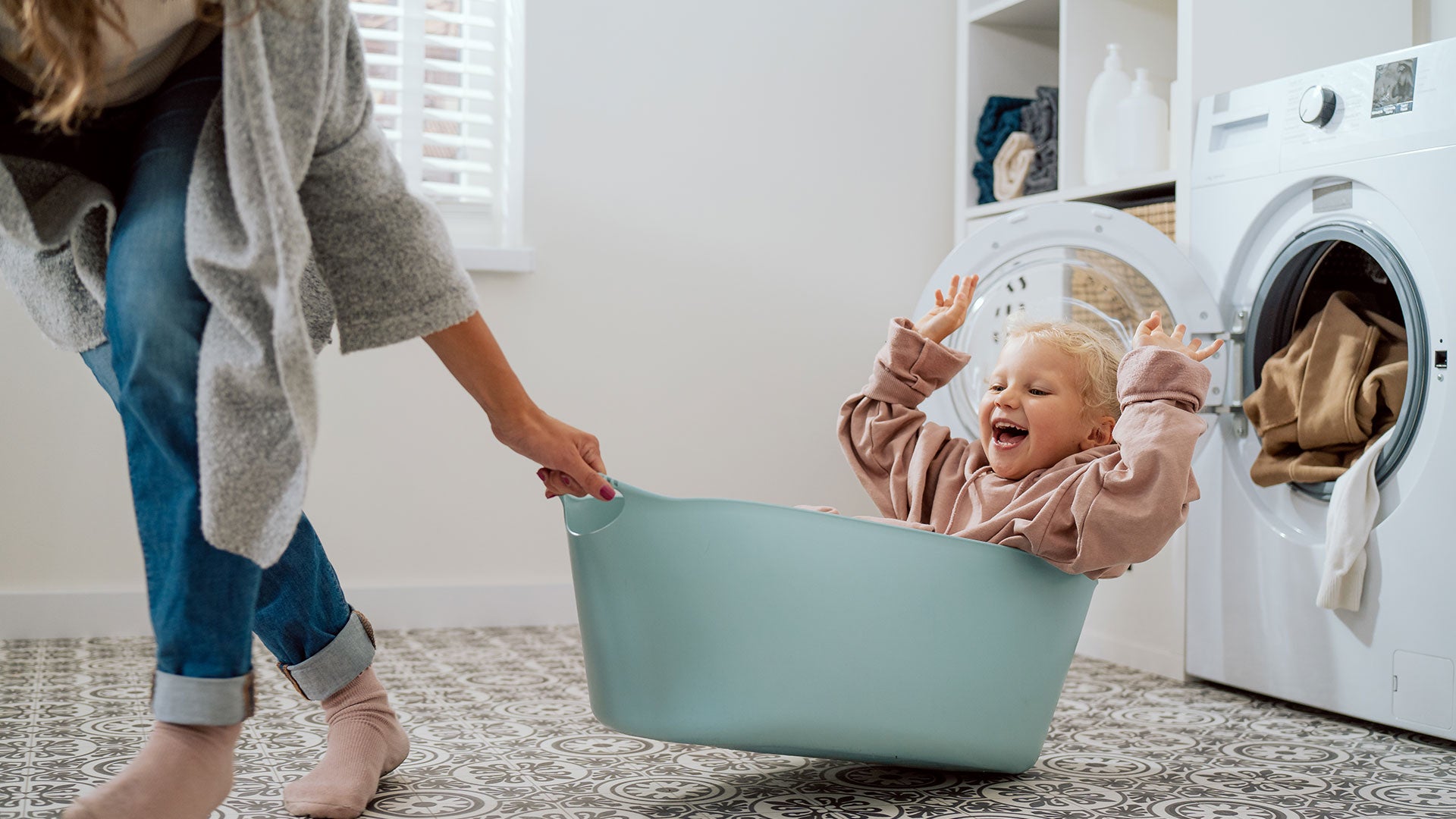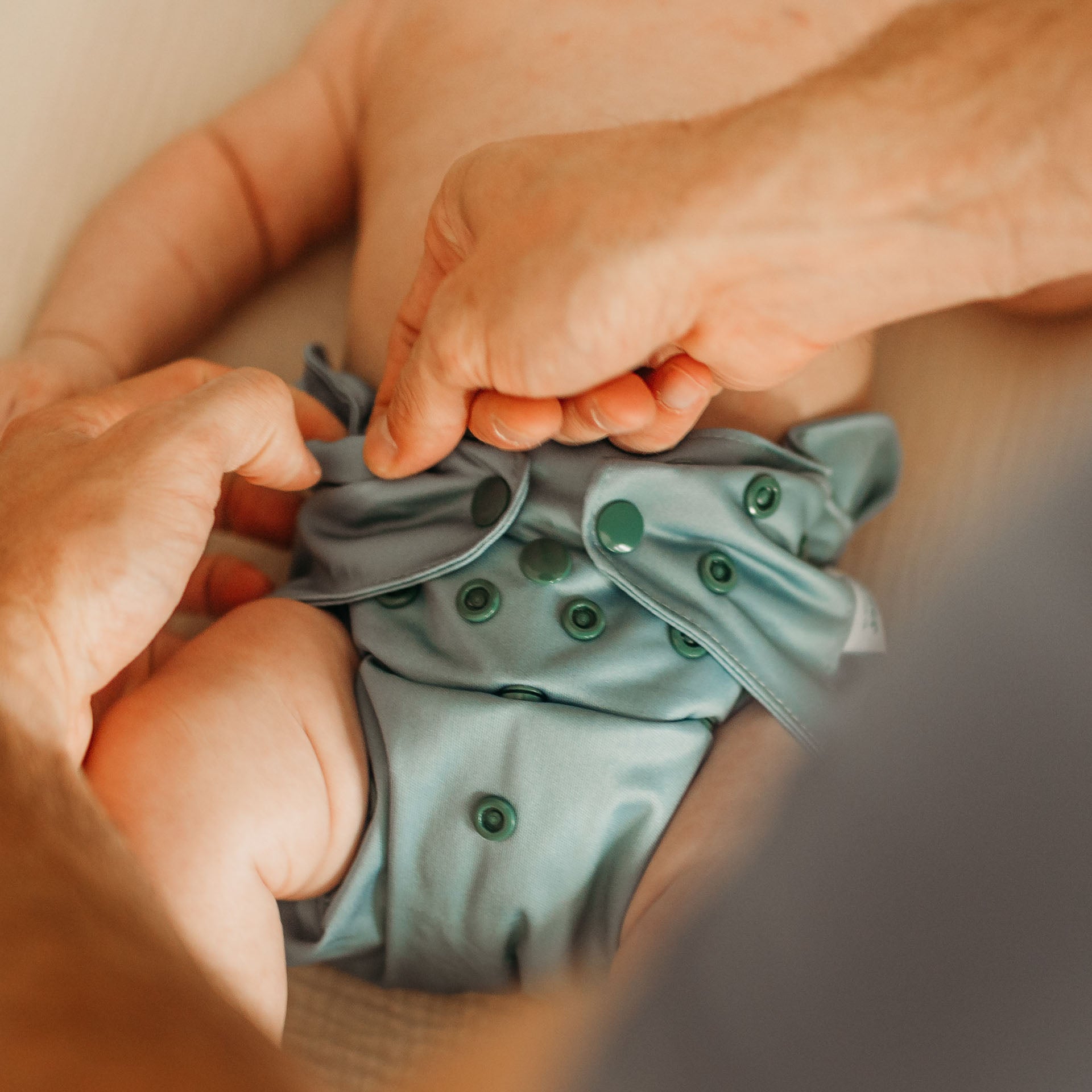A Guide to Using Modern Cloth Diapers
Fit tips and tricks for successfully cloth diapering your new baby or toddler.

A Guide to Using Modern Cloth Diapers
Fit tips and tricks for successfully cloth diapering your new baby or toddler.
At Kinder, we believe that cloth diapering doesn't have to be intimidating or all-or-nothing. Whether you're a full-time cloth diaper parent or looking to incorporate reusable diapers part-time, we're here to support you every step of the way. Our popular pocket-style diapers are designed to be easy to use, comfortable, and adaptable to your family's unique needs.
Modern cloth diapers have come a long way – gone are the days of complicated pins and stiff fabrics. Our cloth diapers feature breathable athletic wicking jersey (AWJ) lining, customizable absorbency, and designs that are as simple to use as disposables. We know that every family's cloth diapering experience is different, which is why we offer flexible solutions that can grow and change as fast as your baby.
Ready to start your cloth diapering adventure? Don't worry about getting everything perfect right away. We're here to help you find a system that works for you, whether that means using cloth diapers full-time, part-time, or just occasionally.
Modern reusable diapers are designed to be adjustable and fit most babies from birth to potty training — the snaps along the front of the diaper make this possible.
While some brands offer a sized diapering system free of rise snaps, at Kinder, we offer a one size fits most system that can grow and change with your baby.


Step 1: Set the Rise
Rise snaps are used to adjust the overall length of the cloth diaper. The smaller the setting, the smaller the diaper will be. It is important to secure these snaps before moving on to step two.

Step 2: Add Absorbency
After setting the rise, add the absorbency style of your choice. Depending on the style of diaper you're using, the absorbency may need to be stuffed inside a pocket opening or placed against baby's skin.

Step 3: Cup and Tuck
Cup the crotch of the diaper in your hand like a taco and tuck it up into the underwear line. It is important to place the elastics in the underwear line in order to ensure a good fit and prevent stubborn leaks. A diaper that is properly tucked is also more comfortable.

Step 4: Secure the Hip Snaps
If your diaper has hip snaps, secure them before securing the inner waist snaps. This will allow you to quickly and easily adjust the diaper if it is too loose or too tight before snapping the middle waist snaps.

Step 5: Fasten the Waist Snaps
After securing the wide hip snaps, fasten the inner waist snaps. Ensure that you are able to fit two adult fingers easily between the diaper and child's belly to make sure the diaper is not too tight.

Step 6: Check for Gaps
Once the cloth diaper is on, lift the leg to check for gapping. Gaps around the leg are the most common cause of stubborn leaks for new to cloth diapering families.
Need more help? Email us at help@kinderdiapers.com

At Kinder, we believe in simplifying cloth diapering. Because your wash routine doesn't have to complicated and overwhelming in order to be effective.
We've broken down wash and care into easy to digest bits of information — no wash worksheet required.
A quick video explaining the pros and cons of pocket style cloth diapers.
Soiled cloth diapers can be stored in water-resistant wet bags or plastic laundry pails until wash day. At Kinder, we offer large, zipper-top wet bags designed to effectively contain odors and moisture.
After changing your baby's diaper, remove any solid poop and allow the diaper to air dry before placing in the dirty storage container. You can then choose from several storage options, including an open-air pail, a lidded cloth diaper pail, or a zipped hanging wet bag to help minimize smells.
To maintain freshness and prevent staining, avoid letting the diapers sit for too long without washing. It’s recommended to wash them every 2-3 days to keep odors at bay. We do not recommend going more than 7 days between washes.
When cleaning modern reusable cloth diapers, the poop or solid soil removed before washing. There are many different methods for poo removal. Some of the most popular methods include:
Most families will wash their reusable cloth diapers 2-3 times per week, or about once every 2-3 days.
A good wash routine can support washing anywhere from 1-7 times each week.
Additional factors like climate and budget may also impact the frequency with which you choose to wash.
Most Families Wash 2-3 Times Per Week: 72% of families report washing their cloth diapers 2 or 3 times per week.
Few families wash cloth diapers every day: While only 5% of the families that completed our survey reported washing their cloth diapers daily.
The number of diapers you wash at one time will vary based on your lifestyle, wash routine and machine size.
Most families report washing around 20 diapers at once. This is typical of 2-3 days worth of cloth diaper laundry for an infant.
As your baby grows you may find that you can wash less often, with larger loads of cloth diaper laundry.
No, exclusively breastfed or chestfed infant poop is water soluble and does not need to be rinsed before washing. However, rinsing before washing can help minimize staining.
Cloth diapers that have an odor after washing is an indication of a wash routine issue. This can be caused by a number of things, such as detergent buildup, hard water, urine residue, improper washing, and left-over particles of poop.
The most common types of odor on cloth diapers are ammonia and barnyard smell. Ammonia smell is caused by, you guess it, ammonia or leftover pee on the diapers. By contrast, barnyard smell is caused by poop, and diapers that are not getting clean enough, and it is usually more obvious when diapers are warm.
To avoid these smells, it is important to have a good wash routine, use the right amount of detergent, avoid fabric softeners and dryer sheets, and ensure that the diapers are getting cleaned enough.
At Kinder, we recommend washing soiled cloth diapers twice. The first wash, a pre-wash, removes all excess soil to allow the main wash to thoroughly wash the dirty cloth diapers.
Some families use detergent in both cycles while other families find that they only need detergent in the main wash cycle.